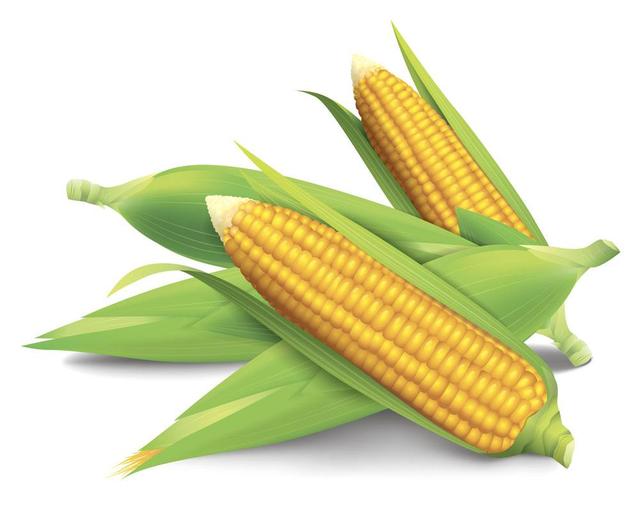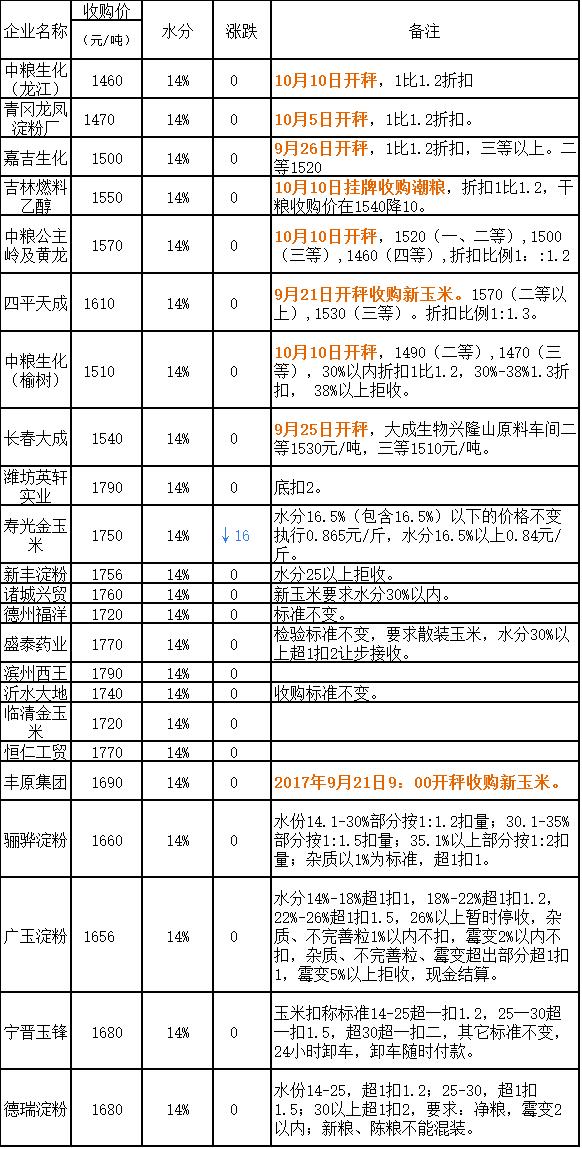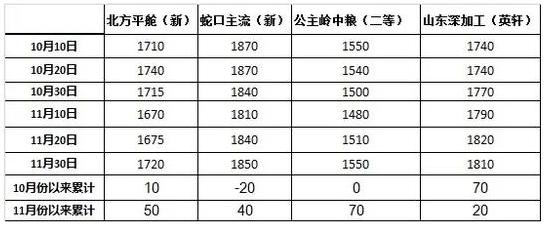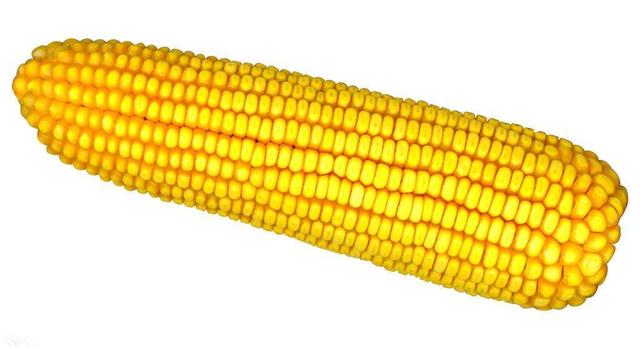Daily grain and oil: how much longer can the price of corn rise?

Daily grain and oil news on December 1, corn purchase prices continued to fall slightly in North China today, while the Northeast remained stable.
Shandong Fukuan Biological Engineering adjusted the purchase price of corn by 1 point at 8: 00 in the morning. Among them, over 12 tons is 0.85 yuan / jin, and less than 12 tons is 0.84 yuan (dry standard water).
The price of Chengwu land corn in Shandong Province fell by 2%: 0.835 yuan for moisture below 17.0% and 0.83 yuan for more than 17.0%.
The price of corn in Zhucheng fell 5%: 0.88 yuan / jin. Dry corn in the northeast. (new corn moisture less than 30) mildew and Jiaohu 7 do not buckle, other acquisition standards remain the same.
Changle Shengtai Natural dry ️fell 3% 0.885 to dry grain 0.86.
Shouguang Xinfeng ️fell 5% 0.878 moisture 25, dried grain at the same price.
Shouguang gold corn ️dropped 5% 0.878 moisture 30, dry grain refused to accept.
Chenming starch ️dropped 3% 0.875 moisture over 25% refused, dry grain refused.


Although there has been a recent correction in corn prices in North China, corn quality problems still support local acquisition prices to remain high. Grain authorities in the region are organizing state-owned grain companies to help farmers sort out corn and reduce losses due to corn mildew and sprouting in most areas caused by continuous precipitation during the purchase of autumn grain, officials from Xinmi said yesterday.
On the whole, the mildew of corn in North China still provides strong support for corn prices. According to statistics from the market, the purchase price of Yingxuan corn in Shandong Province has risen by about 70 yuan per ton since October, while the price of Northeast COFCO Gongzhuling is flat in the same period.
Since then, as the corn price in North China broke the high of 0.9 yuan per jin, the price has been adjusted all the way back, while the northeast region continues to maintain a small rise to catch up with the price in North China. Since November, the purchase price of corn in North China has risen by 20 yuan, while that in the Northeast has reached 70 yuan. However, from the horizontal comparison of corn prices, North China is still 200-300 yuan per ton higher than the Northeast.

The recent rise in corn prices in North China has also promoted the outward transportation of corn in the northeast. According to the Guangdong Corn data Network, 9.357 million tons of goods were delivered from January to November 2017 and 5.596 million tons from January to November 2016, an increase of 67.2 percent over the same period last year.
According to incomplete statistics, since November, the amount of corn transported to the south in China's northern ports has basically concentrated in the range of 70-1 million tons, nearly double the average level of 40-500000 tons in the past two years.
However, such a large amount of corn transportation still makes the market in the sales area nervous. Worried about the supply of high-quality corn next spring and summer, companies in southern China have bought more than 10 ships of corn imported from the United States as forward inventory since November-it is reported that the price of corn in the market is 2000 yuan per ton.
In the northeast, the worries about production and demand this year are even more obvious. On the one hand, due to the good quality of corn in Northeast China this year, the grain authorities are worried about the local grain purchase and sale market, and have increased grain export efforts to avoid falling prices as a result of farmers' concentrated grain sales, so that good grain cannot be sold at high prices. On the other hand, the amount of corn shipped abroad has increased a lot compared with the same period in previous years, coupled with the lack of the overall form of production and demand this year, local deep processing enterprises also have to raise prices to collect grain.
It can be said that the current price rise in Northeast China is a rise in the form of grain grab, just as the southern market is worried about the shortage of high-quality corn in the later stage. In previous years, everyone followed the path of state policy acquisitions, but this year everyone is exploring the way in the dark: although everyone knows that the country has stocks, what if there is less grain next year?
It is worth noting that from November last year to January this year, the purchase price of corn in Northeast China fell by as much as 300 yuan per ton.
- Prev

Grain and oil dealers who strive to win in a stable way
At present, the threshold for entry to the grain and oil industry is relatively low, only if you have money, you can act as an agent for a brand, or do not act as a second batch of merchants, or from neighboring counties and cities.
- Next

Why does canola oil become a new favorite in the grain and oil market?
Do you have the right choice for so much cooking oil in the supermarket? What is the real green and healthy oil? did you choose the right one? You know, Hulunbuir doesn't just have mutton.
Related
- The first cup of black tea in spring, the flavor and history of tea gardens in Kenya, Africa
- The computer can not only choose potatoes, but also grow tea rice. AI will grow winter oolong tea champion.
- It is not only the inflated tea bitten by insects, but also engraved with the four seasons tea in Beipu.
- The Oriental Beauty Tea Festival in Zhuxian County takes the stage at the weekend to experience the plus-size feast of oil tea.
- & quot; Oriental Beauty Tea & Exploration of Emei in Hsinchu, the hometown of quot;
- The new variety of strawberry "Tainong 1" dessert is the first choice with mellow aroma. Crimson gorgeous
- History of Tea in Taiwan: from Wild Inner Mountain to Export Tea Garden
- Two types of Taiwan Oriental Beauty Black Tea won the British three-Star Award for Childhood Tea Xiang Zhang Jiaqi changed from pilot to champion tea maker.
- Banana species and varieties: the planting history of Taiwan Xianren banana and dwarf banana is long, is banana disease resistant?
- Coffee planting Technology: Qianjie Coffee from Seedling to harvesting

